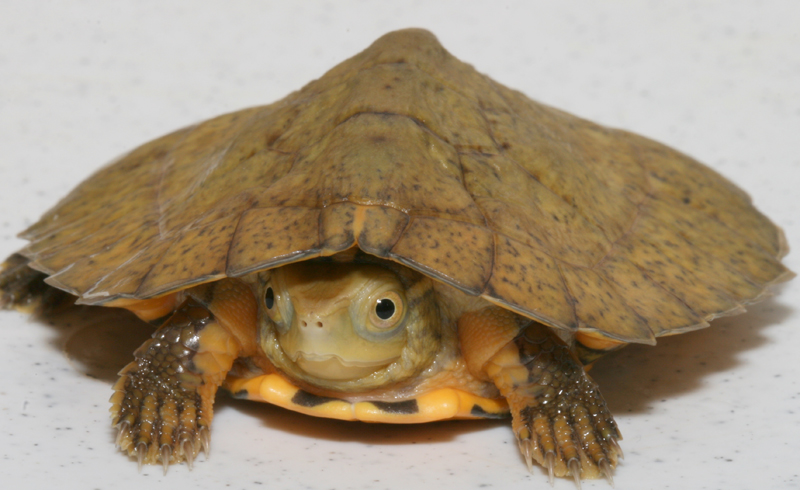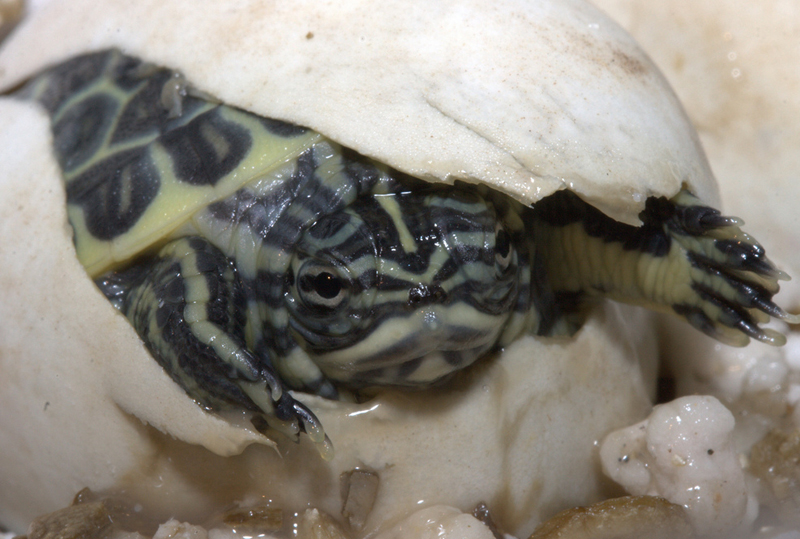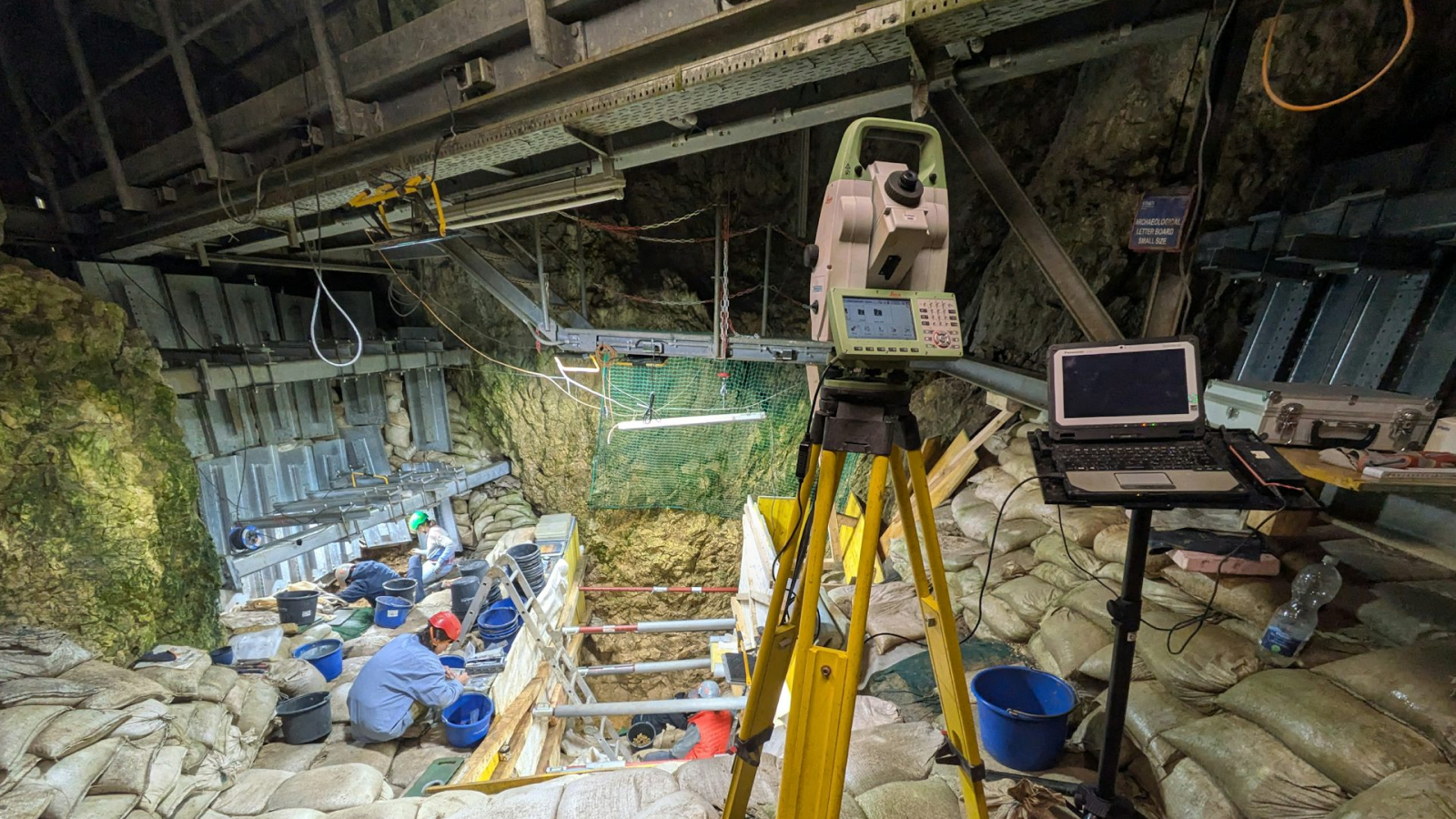Photo: Host of Tiny Turtles Born at Aquarium


A big baby boom of teeny turtles has hit the Tennessee Aquarium, and keepers have their hands full caring for their newly-hatched charges, among them some rare species whose populations are facing steep declines in the wild.
The Chattanooga institution has welcomed 20 reptilian bundles of joy in recent weeks.
Eight yellow-blotched map turtles have hatched so far, and still more could be born before the end of the season, according to a statement from the aquarium. The species' shell is decorated with swirls of yellow and brown and ringed with graceful points and is native to Mississippi's Pascagoula River. The turtles are listed as threatened by the U.S. Fish and Wildlife Service.
Temperature during incubation determines the sex of yellow-blotched map turtles, which allowed keepers to essentially cook up an equal number of males and females.
Seven red-headed Amazon River turtles also recently hatched, making this a banner year for a species that has proved hard to breed at the aquarium, and one that is listed as vulnerable by the International Union for the Conservation of Nature. [Turtle Aid: Species to Save]
Native to Brazil and Columbia, these semi-aquatic turtles can't pull off the typical turtle trick of withdrawing their heads into their shells and instead turn their heads sideways when threatened.
The four-eyed turtle, named for the bright white markings on the tops of their heads that resemble staring eyes, is the most elusive of the species recently hatched. Three of these endangered Asian turtles now call the aquarium home.
Get the world’s most fascinating discoveries delivered straight to your inbox.
The Tennessee Aquarium boasts the largest population in the United States of this rare species, which is native to Laos, Vietnam and China, where it's facing the gravest threats.
Turtles are some of the most threatened vertebrates on the planet. Roughly half of the world's 300 species are endangered or facing extinction, decimated by hunting for both food and the pet trade, and by habitat loss.
Finally, two Florida chicken turtles round out the bevy of tiny reptiles. These turtles (yes, they got their name because they apparently "taste like chicken") aren't threatened in the wild, but are valuable to zoos and aquariums because of their unusual reproductive strategies, according to Dave Collins, the aquarium's curator of forests.
"They breed in winter and their eggs need to be cooled for several weeks before being warmed to begin developing," Collins said in a statement. "Research in zoos and aquariums helps uncover these details. And that can lead to successful breeding of rare species for conservation purposes."
The flurry of blessed events is keeping zoo staff on their toes, senior herpetologist Bill Hughes said in a statement.
"While many species nest at specific times of the year, they don't choose specific times of the day to lay eggs," he said. "So we really have to keep a close eye on all of the enclosures to make sure we collect the eggs in a timely fashion for incubation."
Overall, the aquarium is home to more than 500 turtles of 75 different species.
Follow OurAmazingPlanet for the latest in Earth science and exploration news on Twitter @OAPlanet. We're also on Facebook & Google+.





